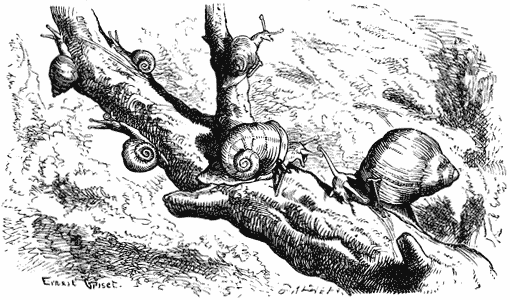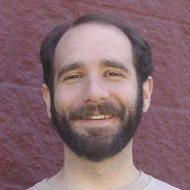 Snips and snails? Sugar and spice? What drives some people to creationism, and others to accept evolution? Jonathan Hill’s survey of American attitudes on evolution and creationism (on behalf of the pro-evolution evangelical group Biologos) offers a lot of insight for anyone who has pondered that issue (as we at NCSE necessarily must). I discussed some of the results of the poll in an earlier post, but there’s plenty more to explore. Hill summarized his findings in a blog post for Biologos, and the full report is available as a PDF.
Snips and snails? Sugar and spice? What drives some people to creationism, and others to accept evolution? Jonathan Hill’s survey of American attitudes on evolution and creationism (on behalf of the pro-evolution evangelical group Biologos) offers a lot of insight for anyone who has pondered that issue (as we at NCSE necessarily must). I discussed some of the results of the poll in an earlier post, but there’s plenty more to explore. Hill summarized his findings in a blog post for Biologos, and the full report is available as a PDF.
The survey separates out elements of the standard question used by Gallup. I discussed some of the Gallup question’s flaws a year ago, in trying to sort out how many people are actually young earth creationists. The question asks people to select among three options: that humans were created in their present form less than 10,000 years ago, that humans evolved over millions of years without God’s involvement, and that humans evolved over millions of years with God’s involvement. The question thus mixes scientific questions about the age of the earth and human evolution with a theological question about the involvement of God, making it difficult to interpret the results, and the middle “God guided the process” option doesn’t separate theistic evolutionists (who generally favor teaching evolution and oppose invoking supernatural interventions in evolutionary history) from “intelligent design” creationists and various kinds of old-earth creationists (whose views on teaching evolution, and the role of the supernatural in evolutionary history, are decidedly different). Gallup also doesn’t offer an option for “Don’t know,” which other researchers have found makes a substantial difference in responses to the Gallup item (forcing people to choose among confusing options can leave them choosing randomly, or defaulting to the middle ground provided by the theistic evolution/”intelligent design” creationist/old-earth creationist option).
Hill separated out those issues, offering “don’t know” options throughout, and asked a lot of related questions, to give deeper insight into creationists, theistic evolutionists, and atheistic evolutionists (a term of art referring not to atheists per se, but anyone who does not think God had a role in evolution), and to explore why creationists are creationists and why those who accept evolution do so. Hill explains the choice to separate the items: “Many Americans will select a Young Earth creationist view when presented as a package with other beliefs they are more certain of, but not many are able to clearly affirm the full position when it is deconstructed into its components.”
Hill asked respondents separately whether they “believe that humans evolved from non-human life forms,” and whether “God (or some other intelligent force) was involved in any way with the origin of humans.” If respondents thought God was involved, the survey asked, “Which one comes closest to what you believe about God’s (or an intelligent force’s) involvement in the origin of humans: (1) direct involvement by miraculously creating humans; (2) direct involvement but through the ordinary laws of nature; or (3) indirect involvement by creating the laws of nature which led to the emergence of humans.” Respondents were asked whether Adam and Eve were real people, whether God created the world in 6 24-hour days, and whether humans came into existence within the last 10,000 years, or if humans have existed longer than that.
For purposes of analysis, Hill took anyone who rejected human evolution and affirmed that humans were created by God to be a creationist. While 37% of the sample met that definition, only 25% met the further restriction of belief that Adam and Eve are real historical figures, and only 8% of the sample met the further restrictions of believing in 6 24-hour days of creation which took place less than 10,000 years ago, confirming my conclusion a year ago that “the hard core of young-earth creationists represents at most one in ten Americans.” Theistic evolutionists are taken as those who accept human evolution but see a role for God in the process (representing 16% of the sample); atheistic evolutionists, who accept human evolution but do not think God played a role (even if they personally believe in God), represented 9% of the sample.
Not surprisingly, the pro-evolution almost always justify their stance by noting that it represents the best science, while those classified as creationists cite the authority of the Bible and defense of Christianity as the main motivations for their beliefs. (Significantly, the latter group’s members can be predicted from their broad religious context: not just beliefs and behavior, but also their social connections.) This suggests that the two groups are in effect hearing two different questions, with one group hearing a question about science, the other hearing a question about religion. Little wonder that this question behaves differently than a question about the size of an electron in measures of science literacy. Yet the question nonetheless is measuring something important about science literacy (indeed, the creationists were also far more likely to falsely believe that evolution is speculative, and to have false ideas about the nature and processes of science).
Why do people interpret this question in such radically different ways? It’s an instance of the classic “two model” dichotomy that’s been a staple of creationist rhetoric for decades. In this view, there are two, and only two, possible explanations for the origin and diversity of life: evolution or creation. If those are the only two possibilities, then anything which strengthens one must inherently weaken the other, and anything which weakens one must strengthen the other. This is, of course, nonsense, but it is remarkably persistent in the American psyche: consider that, when a group of Miss USA contestants was asked whether evolution should be taught in school, three quarters brought in the topic of creationism and religion as an alternative. The same dynamic isn’t true in other countries, and is far more a legacy of the rise of fundamentalism in the US and the Scopes trial in the 1920s than anything inherent to the idea of evolution or religion. And while that dualism isn’t a true reflection of the landscape, it does seem to explain how Americans make up their minds about evolution. The greater priority people place on science as opposed to religion, the more likely they are to accept evolution, while the greater priority they place on religion makes them more likely to endorse creationism.
Indeed, those who selected the young-earth creationist option and those who chose the atheistic evolution option agreed on one key claim, one linked to that dualism: a mere 32% of the creationists and only 19% of those who do not think God was involved in evolution agreed that science and religion are “ultimately compatible.” Over half (53%) of the theistic evolutionists disagreed, saying that the two are ultimately compatible. The groups at the end of the spectrum disagreed about which idea comes out on top of the conflict, but those in the middle were most likely to challenge the dualistic premise. This doesn’t mean that the theistic evolutionists all endorse a version of Stephen Jay Gould’s Non-Overlapping Magisteria model (NOMA): only 32% of theistic evolutionists agreed “Science is about facts and religion is about faith. The two do not overlap,” statistically the same as the 28% of creationists who agreed, and about half the rate at which atheistic evolutionists agreed (59%). NOMA is sometimes treated as synonymous with the position of rejecting a conflict between science and religion, but clearly there are other avenues to avoiding the conflict, and someone can feel that science and religion don’t overlap, yet nonetheless perceive a conflict.
In the end, the factors predicting who would be an atheistic evolutionist or a young-earth creationist are fairly easy to guess. Using a data mining technique to identify combinations of demographic variables commonly associated with the answer to the Gallup question, Hill found that creationists were usually evangelical, believed that the Bible was literal or inspired and had no errors, prayed frequently, considered faith important in their daily life, belonged to families who felt the same way as them, belonged to anti-evolution congregations, and felt that changing their beliefs would produce substantial disagreements in their congregations. Hill adds:
In fact, just the combination of the Bible beliefs…, and belonging to such a [anti-evolution] congregation, will produce [or at least predict—JR] a certain creationist 81% of the time. Not only this, but nearly half of certain creationists [i.e., those who say they are certain] identify with both of these components. Maintaining these Bible beliefs but belonging to a congregation without a settled position on the topic only produces a certain creationist 38 percent of the time. This demonstrates how individual beliefs are important, but only in certain contexts.
The answers for atheistic evolutionists are pretty much the mirror image: generally white, not very religious, not thinking the Bible is literal or inspired and without error, infrequently praying (but this list is far less predictive than the creationist “recipe”). Catholics and the nonreligious are frequent members of this group, and these people less likely to be conservative, and don’t feel the same social pressure from family and congregations.
The theistic evolutionists are far harder to predict. In part, this may reflect the fact that it’s a mixed bag, including some people who believe evolution included miraculous interventions inexplicable by science, some people who simply see God as a sustaining force in the background of all natural law, and some people who simply haven’t thought enough about the issue to have a self-consistent set of opinions. It’s also a small group, with confident theistic evolutionists representing only 8% of the sample, compared to 29% for creationists and 6% for atheistic evolutionists. And predicting how they arrived at that stance is tricky; as Hill observes, “One of the issues is that a lack of certainty is a hallmark of this position.” The model finds that they are generally not politically conservative, don’t regard the Bible as literally true or inspired and without error, and are either Catholic or members of a mainline Protestant denomination. But many who match that description aren’t theistic evolutionists, and many theistic evolutionists don’t match that description.
I’d love to get my hands on the raw data, and see if there are other lessons to be drawn from the survey. It may be possible to separate the theistic evolutionists into subgroups, for instance by examining the different roles they ascribe to God (a question Hill seems not to have analyzed for this report). It may also be possible to understand what to make of the theistic evolutionists who are not confident in their stance: what can we do to strengthen their confidence? Are they torn between the two polar extremes, or do they represent a true third way? What role might social pressure play in strengthening their confidence and drawing more of the creationists to their camp? Are there messages that might resonate with some of these groups, strengthening their pro-evolution impulses and allowing them to move away from unproductive and harmful beliefs?

